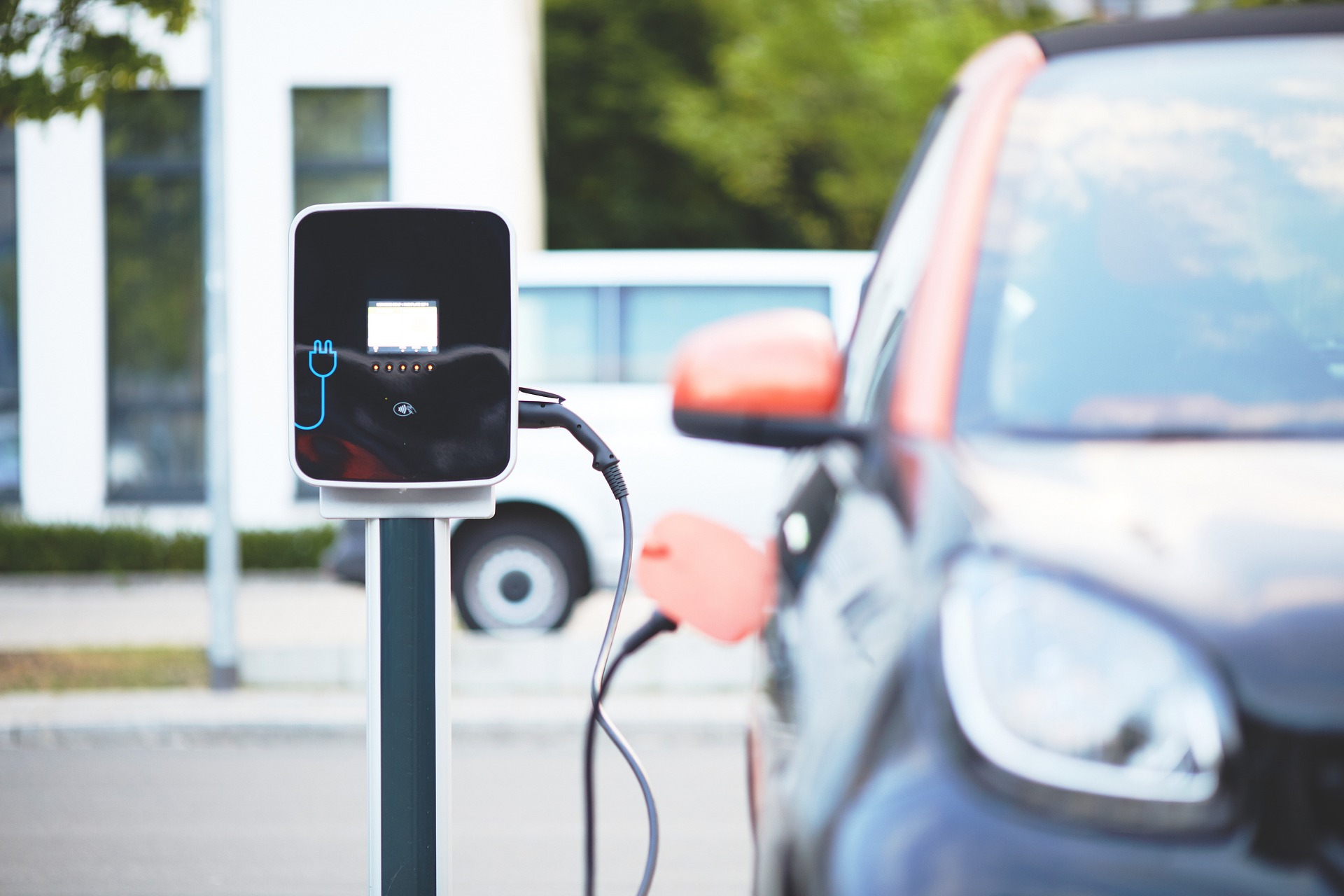
The future of smart mobility in metropolitan cities is poised for remarkable transformation! As technology continues to shape the way we move within our bustling urban environments, innovative solutions are emerging to address the challenges of congestion, pollution, and accessibility. So, let’s cover the exciting developments that promise to redefine the urban mobility experience, creating greener, more efficient, and more inclusive metropolitan cities.
The Electric Vehicles (EVs)
Electric Vehicles (EVs) are at the forefront of smart mobility in metropolitan cities, contributing significantly to the vision of greener cities. With zero tailpipe emissions, they offer a cleaner alternative to traditional gasoline-powered vehicles.
As more people choose EVs, we witness reduced air pollution, making the air fresher and healthier for residents. Therefore, EVs are pivotal in curbing greenhouse gas emissions. Their integration into urban landscapes promotes sustainable living and aligns with the global drive for eco-conscious solutions.
Furthermore, as the EV infrastructure grows, it addresses environmental concerns and enhances the overall urban experience by reducing noise pollution and providing smoother, quieter rides. As a result, EVs are poised to reshape urban centers into greener, more livable spaces.
Autonomous Vehicles (AVs) Revolution
The Autonomous Vehicles (AVs) revolution is rapidly transforming how we think about smart mobility in metropolitan cities. These self-driving cars are quickly becoming a reality on our roads!
AVs hold the promise of safer and more efficient urban mobility. With advanced sensors and AI technology, they can navigate through complex traffic scenarios and reduce accidents caused by human error. Furthermore, the adoption of AVs has the potential to alleviate traffic congestion in metropolitan areas, making daily commutes less stressful.
This revolutionary shift in transportation also has environmental benefits, as AVs can be programmed for fuel efficiency and emission reduction. However, as this technology evolves, it brings about crucial questions regarding safety, liability, and job displacement in the transportation industry. Nonetheless, the AV revolution is here to stay, and it can reshape our cities and how we travel!

Letting your car drive you to your destination will significantly improve congestion issues!
Integration of Mobility-as-a-Service (MaaS)
The Integration of Mobility-as-a-Service (MaaS) is another contributor to smart mobility in metropolitan cities. MaaS seamlessly combines various transportation modes into a single, user-friendly platform, from buses and trains to ride-sharing and bike rentals. This means commuters can plan, book, and pay for their entire journey using a single app, streamlining daily travel. As a result, we have reduced congestion, lowered emissions, and improved accessibility, all contributing to more sustainable and efficient cities.
Moreover, MaaS offers cost-effective options for urban dwellers. This, in turn, can free up valuable urban space currently used for parking. However, successful MaaS implementation requires collaboration among public and private sectors, robust digital infrastructure, and user trust.

It’s becoming easier than ever to simply order a ride.
The Role of Big Data and IoT
The role of Big Data and the Internet of Things (IoT) in urban mobility cannot be overstated. Through IoT sensors, real-time data on traffic flow, weather conditions, and public transit usage is collected, enabling cities to optimize transportation systems for efficiency. Big Data analytics crunches this information to provide insights into trends and potential areas for improvement.
As a result, cities can reduce congestion, predict maintenance needs, and enhance commuter experiences. Furthermore, these technologies facilitate the development of smart traffic management systems, easing traffic bottlenecks and making daily commutes smoother. However, the proliferation of IoT devices also raises concerns about data privacy and security, requiring robust measures to safeguard sensitive information.
Urban Air Mobility (UAM)
Urban Air Mobility (UAM) is an exciting innovation poised to redefine urban transportation. With the development of electric vertical take-off and landing (eVTOL) aircraft, cities are exploring the possibilities of flying taxis and drones for urban travel.
UAM offers the potential to reduce traffic congestion, shorten commute times, and provide efficient transport in densely populated areas. Imagine bypassing gridlocked streets by taking to the skies, drastically reducing travel time. While UAM promises convenience, it also faces challenges related to air traffic management or safety regulations for example. Therefore, overcoming these hurdles is necessary to ensure safe and sustainable urban air mobility.
Climate Change Mitigation
Climate change mitigation is a pressing concern, and cities like Miami exemplify the urgency of action. As rising sea levels threaten coastal cities, Miami has taken steps to combat climate change. They’ve implemented sustainable building practices, invested in renewable energy sources, and promoted eco-friendly transportation solutions. These efforts reduce carbon emissions and contribute to the city’s resilience against climate-related challenges.
Miami’s commitment to sustainability extends beyond the public sector, and local businesses are increasingly adopting green practices to minimize their environmental footprint. Companies like Pro Movers Miami are leading the way in the moving industry by incorporating eco-friendly strategies, such as using fuel-efficient vehicles and reducing waste. So, if you’re looking for climate-conscious experts, they are the way to go, leading the way to a more sustainable industry!
Sustainable Infrastructure Development
Sustainable infrastructure development is an important driver of greener and more efficient cities that rely on smart mobility. It encompasses various eco-friendly initiatives, including solar-powered parking lot lights. These lights harness the power of the sun to illuminate parking areas, reducing energy consumption and carbon emissions.
Furthermore, sustainable infrastructure goes beyond just lighting; it encompasses green building designs, energy-efficient transportation systems, and eco-friendly water management solutions. Such developments help mitigate the environmental impact of urban growth while promoting a healthier and more sustainable future. In addition, investments in sustainable infrastructure create jobs, stimulate local economies, and improve city residents’ overall quality of life. As cities continue to expand, prioritizing sustainable infrastructure development is essential to address pressing challenges such as climate change, resource conservation, and urban resilience!

Charging stations are an important step forward for smart mobility!
Public Perception and Acceptance
Public perception and acceptance are important for the success of smart mobility solutions in metropolitan cities aiming to improve sustainability efforts. For these innovative technologies to thrive, fostering trust and understanding among the public is necessary. Clear and transparent communication regarding the benefits and safety of these systems is the only way to gain public buy-in.
Education campaigns and pilot programs can help familiarize people with the advantages of smart mobility. In other words, it’s important to emphasize reduced traffic congestion, cleaner air, and more convenient transportation options. User feedback should also be actively incorporated into the development process to ensure these solutions meet needs and expectations. By actively engaging the public and addressing their concerns, we can pave the way for wider acceptance of smart mobility!
The promise and potential
Our exploration of the future of smart mobility in metropolitan cities shows that the path ahead is filled with promise and potential. The evolution of transportation systems, driven by technology and sustainability, holds the key to more accessible, efficient, and eco-conscious urban living. With these advancements, cities can chart a course toward a brighter, smarter future!





There are no comments yet